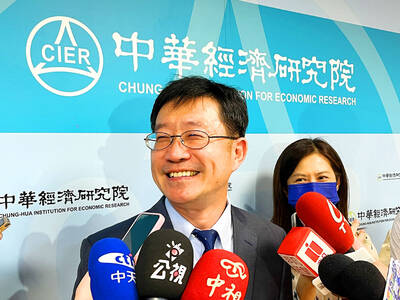Urban renewal projects in Taipei and New Taipei City totaled NT$59.2 billion (US$1.88 billion) for the first five months of this year and could easily exceed NT$100 billion for the entire year on the back of government support, the Chinese-language Housing Monthly (住展雜誌) said on Thursday last week.
That would make this year the third consecutive year that renewal projects have been the main source of new construction, despite the time required to complete them, the magazine said.
The trend is most evident in Taipei, where renewal projects are being carried out in 10 of the 12 administrative districts, Housing Monthly research manager Ho Shih-chang (何世昌) said.
Sunty Development Co Ltd (昇陽建設) might launch an urban renewal project in the city’s Xinyi District (信義), which took the developer nearly 30 years to gain approval for, Ho said.
Sunty has another two urban renewal projects in New Taipei City’s Banciao (板橋) and Yonghe (永和) districts, making it the largest player in the urban renewal sector this year, Ho said.
Sanyuan Group (三圓建設) and Lung Ling Development Co’s (龍麟建設) project, “the Diamond Tower” near the Zhongxiao-Fuxing MRT Station, is about to hit the market after two decades, Ho said.
The developers aim to build two high-rise, mixed-use buildings on 1,545 ping (5,107m2) of land that is 37.36 percent owned by the Ministry of Finance.
Sen Yeh Construction Co (森業營造) has embarked on a project called “the City Garden” near Taipei City Hall after spending 19 years clearing legal obstacles and resolving issues with former occupants, Ho said.
Another renewal project in Taipei’s Beitou District (北投) appears the most popular, with an 80 percent sales rate after its launch in late March, Ho said, adding that the project by Huaku Development Co (華固建設) could generate NT$6 billion in revenue when it is completed.

WEAKER ACTIVITY: The sharpest deterioration was seen in the electronics and optical components sector, with the production index falling 13.2 points to 44.5 Taiwan’s manufacturing sector last month contracted for a second consecutive month, with the purchasing managers’ index (PMI) slipping to 48, reflecting ongoing caution over trade uncertainties, the Chung-Hua Institution for Economic Research (CIER, 中華經濟研究院) said yesterday. The decline reflects growing caution among companies amid uncertainty surrounding US tariffs, semiconductor duties and automotive import levies, and it is also likely linked to fading front-loading activity, CIER president Lien Hsien-ming (連賢明) said. “Some clients have started shifting orders to Southeast Asian countries where tariff regimes are already clear,” Lien told a news conference. Firms across the supply chain are also lowering stock levels to mitigate

Six Taiwanese companies, including contract chipmaker Taiwan Semiconductor Manufacturing Co (TSMC, 台積電), made the 2025 Fortune Global 500 list of the world’s largest firms by revenue. In a report published by New York-based Fortune magazine on Tuesday, Hon Hai Precision Industry Co (鴻海精密), also known as Foxconn Technology Group (富士康科技集團), ranked highest among Taiwanese firms, placing 28th with revenue of US$213.69 billion. Up 60 spots from last year, TSMC rose to No. 126 with US$90.16 billion in revenue, followed by Quanta Computer Inc (廣達) at 348th, Pegatron Corp (和碩) at 461st, CPC Corp, Taiwan (台灣中油) at 494th and Wistron Corp (緯創) at

NEW PRODUCTS: MediaTek plans to roll out new products this quarter, including a flagship mobile phone chip and a GB10 chip that it is codeveloping with Nvidia Corp MediaTek Inc (聯發科) yesterday projected that revenue this quarter would dip by 7 to 13 percent to between NT$130.1 billion and NT$140 billion (US$4.38 billion and US$4.71 billion), compared with NT$150.37 billion last quarter, which it attributed to subdued front-loading demand and unfavorable foreign exchange rates. The Hsinchu-based chip designer said that the forecast factored in the negative effects of an estimated 6 percent appreciation of the New Taiwan dollar against the greenback. “As some demand has been pulled into the first half of the year and resulted in a different quarterly pattern, we expect the third quarter revenue to decline sequentially,”

ASE Technology Holding Co (ASE, 日月光投控), the world’s biggest chip assembly and testing service provider, yesterday said it would boost equipment capital expenditure by up to 16 percent for this year to cope with strong customer demand for artificial intelligence (AI) applications. Aside from AI, a growing demand for semiconductors used in the automotive and industrial sectors is to drive ASE’s capacity next year, the Kaohsiung-based company said. “We do see the disparity between AI and other general sectors, and that pretty much aligns the scenario in the first half of this year,” ASE chief operating officer Tien Wu (吳田玉) told an